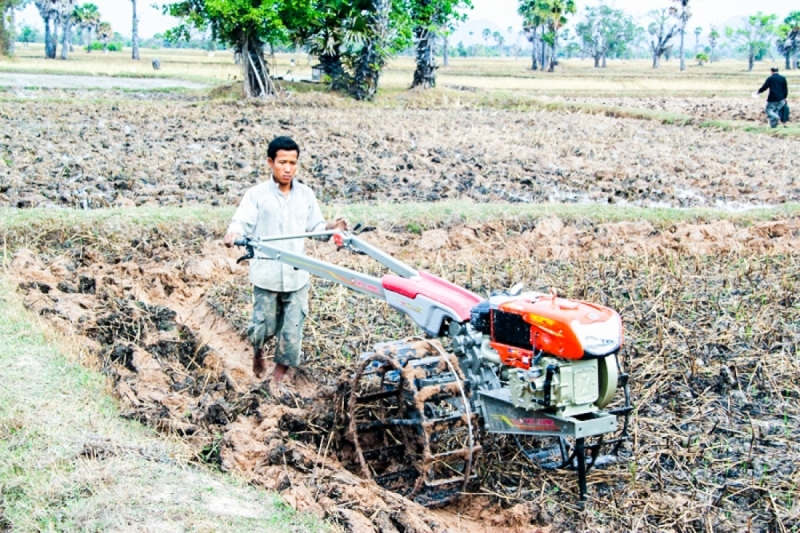




Agricultural production, especially in the rice sector, is becoming increasingly mechanized due to a shortage of labor caused by a sharp migration of youth to the cities and the rise in prices of commodities, said a Ministry of Agriculture, Forestry and Fisheries (MAFF) official yesterday.
“The use of machinery and equipment has increased in farms due to the growth of the economy that is causing many able-bodied young men to move out of the rural areas to work in factories in the urban areas,” said Ty Sokun, secretary of state at MAFF.
“Right now, especially in the rice farms, there is a 70 percent capacity in terms of labor. But in the next few years, the workforce could dwindle to less than 50 percent,” said Mr. Sokun.
“Because of that, farmers would have no choice but to mechanize their operations – if they want to survive.”
Mr. Sokun also said the price of agricultural commodities is rising and so is the demand for food. Because of this, he said, farmers could use machines to “expand their food production by intensification.”
“For example some regions used to produce one crop a year, now they can grow two or three crops a year on their land or expand their growing areas.”
Song Saran, CEO of Amru Rice (Cambodia), who works closely with 3,000 farmers in Cambodia, said there is an increasing trend among the country’s rice farmers to use machinery such as four-wheeled tractors and walk-behind tractors.
While Mr. Saran said this was a positive development in the agriculture sector, he, however, pointed out that there were no credit schemes offered by the government for farmers to purchase machinery and equipment.
“To buy new machines and equipment, farmers have to use either their own savings or borrow money from banks or microfinance institutions,” he said.
Mr. Saran urged the government to do more by providing fuel subsidies to farmers using tractors on their farms.
“The government should support a strategy for agricultural mechanization and not just pay lip-service to it,” he said.
“Machinery alone will not provide much productivity if farmers invest a lot of money in it. There are still the high production costs, to contend with.”
Ngorn Saing, CEO of RMA Cambodia – the official distributor of American agricultural machinery manufacturer John Deere – said the use of tractors in Cambodia has risen but tractor imports fell last year.
Mr. Saing said that RMA saw the import of agricultural machinery drop last year to about 200 units from 300 units in 2015.
A MAFF report released last month showed that the use of agriculture machinery rose to about 91 percent in 2016, compared with 83 percent in 2015, while the use of cattle in farming was 8.8 percent last year.
According to MAFF, in 2016, farming by agricultural machinery covered about 2.73 million hectares in the rainy season out of the total of about three million hectares. In the dry season, machinery helped farm 356,705 hectares out of 369,304 hectares.